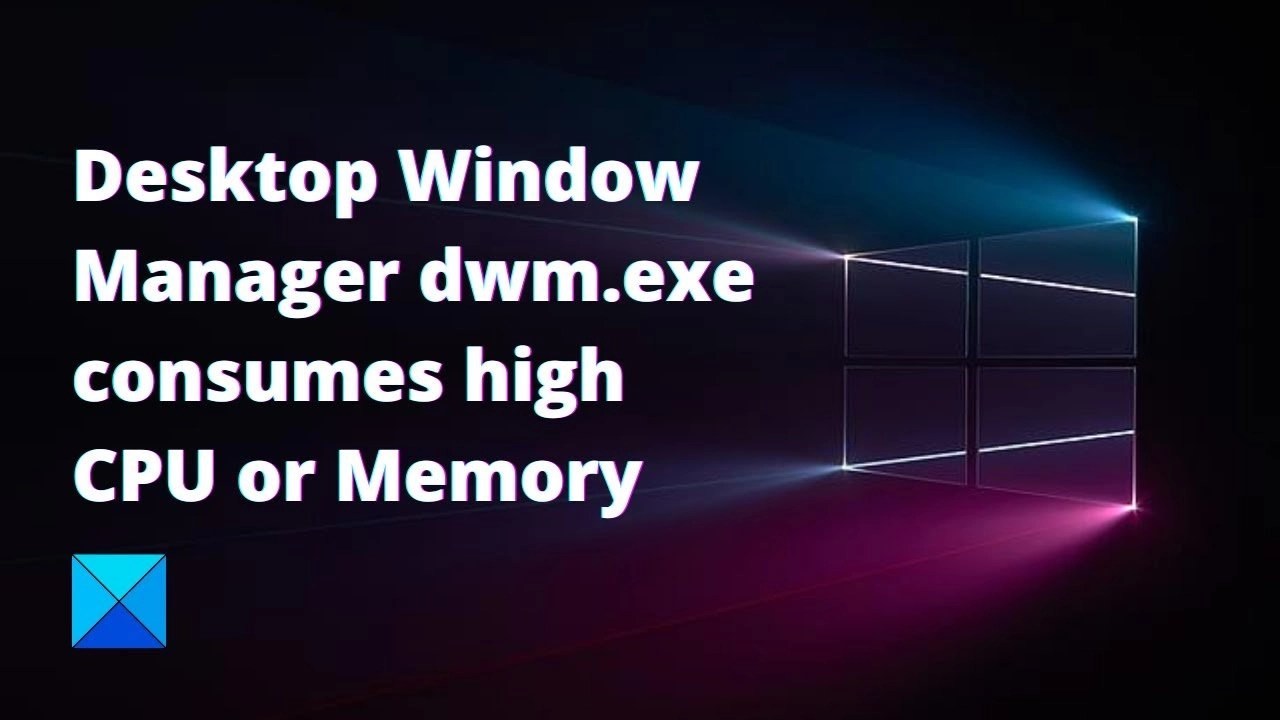Why Dwm.exe Causes High CPU Usage and How to Fix it
This guide explains why Dwm.exe (Desktop Window Manager) causes high CPU usage and how to fix it. Click the link to read the full guide.
Author:Daniel BarrettAug 16, 202230.2K Shares1M Views

Why Dwm.exe Causes High CPU Usage and How to Fix it– Everything you see on a computer screen, whether it’s a Windows, Mac, or Linux device, is generated by system processes that control everything from your network connection to your user interface. Windows users might be familiar with some of these, including explorer.exe to show your desktop, but others will be less familiar.
System processes like dwm.exe are common and integral parts of the Windows operating system. Dwm.exe, in particular, helps to create a graphical user interface for Windows, but it can sometimes cause high CPU usage. If that’s the case, here’s what you’ll need to do to fix the problem. This guide explains why Dwm.exe (Desktop Window Manager) causes high CPU usage and how to fix it.
What is Dwm.exe?
The dwm.exe (Desktop Window Manager) process is an important system process with responsibility for your graphical user interface. In particular, it helps to generate visual effects, such as transparent windows and taskbar thumbnails, that you’ll see when you’re using Windows. This is due to the approach Windows uses to create these kinds of effects. When you open new software, the design of the user interface is logged to Windows memory, allowing the design to be generated. Windows then takes these window designs and manipulates them to ensure that their own visual effects are applied.
Windows uses hardwareacceleration to help make this a seamless experience for users, making use of your graphics hardware in the process, although it can default to software rendering if your graphics card (or built-in graphics chipset) isn’t able to do so.
Can I Turn Desktop Window Manager Off?
No, you can’t. Back in the Vista days, Desktop Window Manager was controlled through a service that you could turn off—and in turn, disable all the visual effects. Starting with Windows 7, Desktop Window Manager became a more integral part of Windows, that’s vital to creating the graphical user interface. That integration has deepened even further in Windows 8 and 10.
The good newsis that Desktop Window Manager has gotten a lot better about how it manages resources, and you shouldn’t really need to turn it off.
What Can I Do if it’s Using Up RAM and CPU?
Desktop Window Manager should use fairly minimal resources. On my system, for example, I’ve got half a dozen active apps running, including Chrome, which has got more than a dozen tabs open.
Even then, Desktop Windows Manager is using a little less than 1% CPU and about 60 MB RAM. That’s a pretty typical load. You should rarely see it creep much higher than that, and even if it does spike higher on occasion, it should settle back down quickly. If you do see Desktop Window Manager eating up more RAM or CPU than you think it should, there are a couple of things you can try:
- Make sure you have your hardware drivers updated, especially the drivers for your video card or integrated graphics adapter. Desktop Window Manager offloads a lot of work to your GPU to reduce the load on your CPU.
- Check your computer for malware. Some types of malware are known to cause issues with Desktop Window Manager.
Those are both good places to start.
Could this Process be a Virus?
The Desktop Window Manager process itself is an official Windows component. While it’s possible that a virus has replaced the real process with an executable of its own, it’s very unlikely. If you’d like to be sure, you can check out the underlying file location of the process. In Task Manager, right-click the Desktop Window Manager process and choose the “Open File Location” option.
If the file is stored in your Windows\System32 folder, then you can be fairly certain you are not dealing with a virus. That said, if you still want a little more peace of mind, you can always scan for viruses using your preferred virus scanner.
How to Disable or Remove the Desktop Window Manager (dwm.exe) Process
While older versions of Windows allowed you to switch the Desktop Window Manager (dwm.exe) process off, this is no longer possible in Windows 10. The DWM process is now firmly integrated into the Windows user experience, meaning the graphical user interface you use relies on it to work. While some of the visual effects you see can be disabled in Windows Settings, you can’t stop the dwm.exe process from running.
It’s also not possible to remove it. The dwm.exe is an essential system process, so unless you want to break Windows 10 completely (and be forced to wipe and reset Windows as a result), you should leave it alone.
Potential Fixes for Dwm.exe High CPU Usage
The Desktop Window Manager process can’t be switched off or disabled, but there are some potential fixes you can try if you find it eating up your system resources, especially if your CPU usage is unusually high.
Check For Windows System Updates
The first (and probably most important) fix for Windows users is to keep your system updated. Microsoft issues bug fixes and system upgrades on a regular basis, which can help to improve your overall system stability, especially for newer hardware.
You can check for updates in Windows Settings by right-clicking the Start menu and pressing the Settings option. In the Windows Settings menu, press Update & Security > Windows Update > Check for updates to check and install any of the latest system updates for your PC.
Once updated, restart your PC to see if the updates have any impact on the dwm.exe process.
Check For Graphics Driver Updates
If Windows is up-to-date, your next step is to ensure that your graphics drivers are up-to-date, too. You may find that you need to check the manufacturer’s website for the latest driver releases, as drivers often reach the Windows update system much later.
For instance, NVIDIA card owners would need to check the NVIDIA website to get the latest updates, which are often released alongside major game or hardware releases. These come with the latest bug fixes, too, which can help to solve unusual problems like high CPU usage.
Check Your Graphics Card Is Being Used
If you’ve installed a new graphics card and the drivers are updated, you should also check that the card is being used correctly. If you’ve connected your monitor cable to your motherboard and not your graphics card by mistake, your graphics card will be ignored. This could result in Windows defaulting to software acceleration for visual effects instead. You can double-check if this is the case in the Windows Task Manager. Right-click the taskbar and click Task Manager to open this, then press the Performance tab in the Task Manager window.
Devices with more than one GPU (for instance, PCs with a built-in GPU on the motherboard and an external graphics card) will be shown here, listed as GPU 0, GPU 1, etc. If the resource usage for the internal graphics chip is higher, this would mean your graphics card isn’t being used.
To help resolve this, check the connections between your monitor and your graphics card to ensure that the correct device is being used.
Scan Windows For Malware
If your system is up-to-date and working correctly, then high CPU usage could point to a malware infection. Make sure to scan Windows 10 for malware thoroughly, including running a boot-level scan using Windows Security or another antivirus. If you’re worried that the dwm.exe process isn’t the official system process, you can double-check in Windows Task Manager.
To do this, right-click the taskbar and select Task Manager, then find the running Desktop Window Manager process, listed under the Processes tab in the Task Manager window. Press the Open file location option to open the location of that running file in Windows File Explorer.
This will take you to the location of the Desktop Window Manager process. If the file location isn’t the C:\Windows\System32 folder, then the running process isn’t the official dwm.exe file. If this is the case, run another malware scan and, if nothing else works, you may need to think about giving Windows a factory reset to ensure you have a fresh configuration.
Other Important System Processes in Windows 10
The Desktop Window Manager (dwm.exe) process is just one of many important system processes that you might not have previously heard of. Like svchost.exe and others, dwm.exe can sometimes be associated with spikes in CPU usage. But in many cases, this can be fixed by updating your PC and checking for malware.
While it isn’t possible to disable dwm.exe, you can switch off some of the newer Windows 10 visual effects in Windows Settings. This may help to deal with CPU spikes if malware isn’t the cause. But you may need to look at alternatives, including upgrading your hardware, if your PC is struggling.
Editor’s picks:
Jump to
What is Dwm.exe?
Can I Turn Desktop Window Manager Off?
What Can I Do if it’s Using Up RAM and CPU?
Could this Process be a Virus?
How to Disable or Remove the Desktop Window Manager (dwm.exe) Process
Potential Fixes for Dwm.exe High CPU Usage
Check For Windows System Updates
Check For Graphics Driver Updates
Check Your Graphics Card Is Being Used
Scan Windows For Malware
Other Important System Processes in Windows 10

Daniel Barrett
Author
Daniel Barrett is a tech writer focusing on IoT, gadgets, software, and cryptocurrencies. With a keen interest in emerging technologies, Daniel offers expert analysis and commentary on industry trends. Follow him for authoritative insights into the latest tech innovations.
Latest Articles
Popular Articles